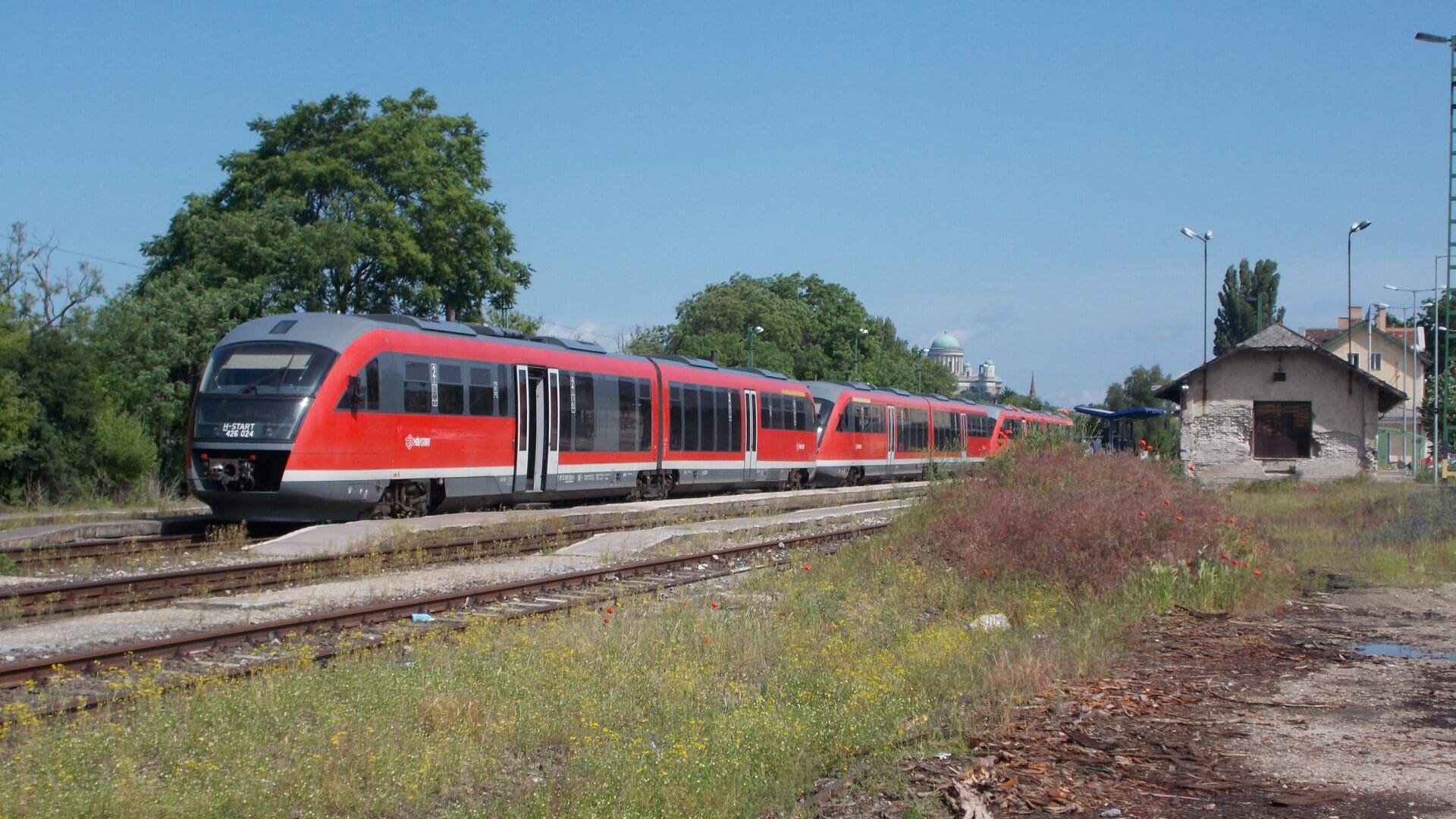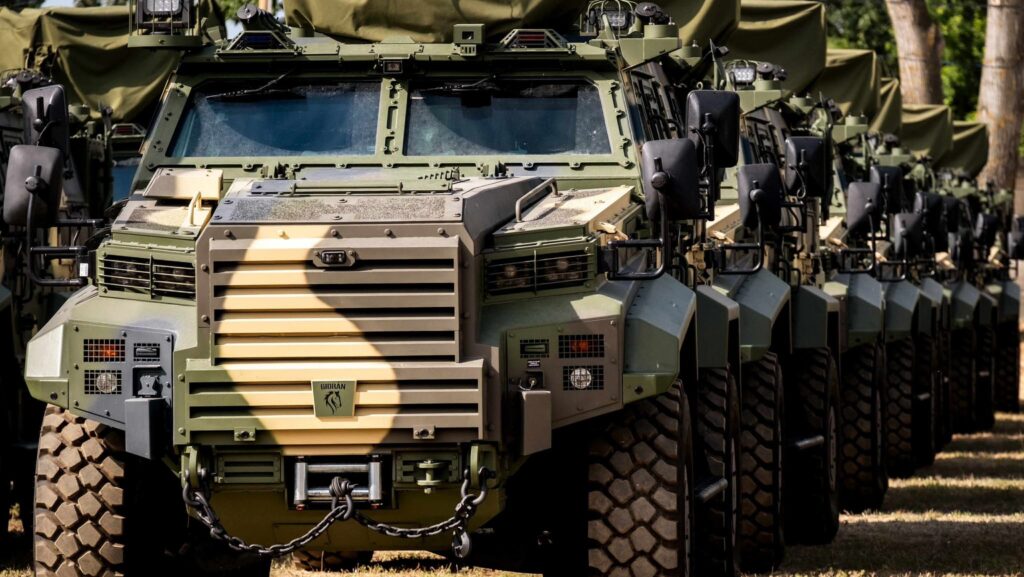It is hard to think of a year in the nearly 180-year-long history of Hungarian railways, or even in the past decades, as turbulent as 2023 has been so far. After many years, Hungary’s largest passenger railway company, state-owned MÁV-START, was forced to stop operating passenger trains on a number of branch lines. The country’s most important main line is in such a dire state that first severe speed restrictions had to be introduced and then, exceptionally, part of it had to be closed, causing serious disruption to international train services. In the meantime, the state railway company’s locomotive fleet is also suffering from problems which are forcing it to hire second-hand locomotives from abroad.
What happened to the once reputable Hungarian railway?
The daily operation of the Hungarian railways is hampered by profound structural problems, which cannot be analysed in depth in an article of this length. The author, whose personal interests and career are also linked to the world of railways, can only undertake a superficial overview on this occasion, which he hopes will shed light on some of the everyday difficulties of Hungarian railways for foreign readers.
In early October, the Hungrail association, which represents the interests of railway companies operating in Hungary, held a conference in Budapest. MÁV-START CEO László Mosóczi also spoke at the event. In his presentation, Mosóczi outlined the new rolling stock strategy of the railway company, which envisages, among other things, the purchase of 80 new high-quality intercity trains. The company would also upgrade its night trains and buy new trains for international traffic, including high-speed trains. The ten-year strategy also foresees major rolling stock upgrades for unelectrified branch lines.
It must be said that these are very sound plans, but at the same time, daily users of the Hungarian railways have had to get used to the fact that such promises are mostly not, or only partially, realized. The reason, as so often, is very prosaic: while strategy-making is not a capital-intensive art, the actual development of the railways is, unfortunately, very much so. And money has traditionally been a scarce commodity for the Hungarian railways.
Unlike in many European countries, the rail passenger transport market has not been liberalized in Hungary. Most of the national passenger transport is dominated by the two state-owned railway companies: MÁV-START, which is active throughout the country, and GYSEV, which operates in the western part of Hungary; the only other player is Regiojet, a Czech-based company which operates trains between Budapest and Vienna and Prague. The domestic passenger transport market can be divided into three segments: the suburban segment serving Budapest and its surrounding area; the long-distance segment connecting the capital with the major rural cities; and the rural interurban segment.
The Lopsided Development of the Hungarian Railways
The railways around the capital have undergone spectacular improvements over the past two decades, thanks in large part to the significant sums of money available from European Union development funds for rail improvements. In the Budapest agglomeration, most of the lines are now served by world-class trains, which, together with the urbanisation process that has accompanied these developments, has often led to a surge in passenger numbers on these lines.
Most of the difficulties today are no longer problems with rolling stock, but rather infrastructure deficiencies and bottlenecks that can only be overcome at relatively high costs. There are several plans to modernize and transform the rail network in Budapest—
one of them, for example, envisages a tunnel running under the whole city,
similar to the Elizabeth Line recently put into service in London.
However, these plans have not yet materialized, and the Hungarian government does not expect this to change: in recent months, most of the developments have been postponed, due in no small part to the frosty relationship between Budapest and Brussels.
Improvements have also been made to the national network, thanks to the economic boom and the available EU funds. In recent years, the railway line to Debrecen, Hungary’s second largest city, has been upgraded, as well as the line through Székesfehérvár to the Croatian border and the line through Békéscsaba to Romania. However, these investments have never been able to deliver all their potential positive impacts. The theoretical maximum speed on most of the renovated Hungarian railway lines is only 160 km/h, which is not particularly fast by European standards. It is a different matter that most Hungarian trains do not even reach this not very high speed, because the vast majority of the dangerously ageing rolling stock is simply not suitable for running at such speeds.
According to MÁV-START, the average age of its fleet is somewhere between 40 and 50 years, despite the fact that the company has managed to acquire 25 new locomotives and more than 100 new EMUs in the last fifteen years. (It is worth noting that old age does not in itself condemn trains to eternal slowness. The first generation of the famous French TGVs, for example, served for nearly 40 years—true, the TGVs represented the state-of-the-art technology of their time, while the same cannot be said of the Hungarian industry’s products of the same era, not even with some patriotic goodwill.)
However, their slowness is far from being the old trains’ only problem. Most of them no longer meet today’s passenger comfort requirements:
75 per cent of long-distance trains do not have efficient air conditioning, but they are also difficult, if not impossible to use for passengers with reduced mobility.
From an operational point of view, they are equally problematic: old locomotives and wagons are often difficult and expensive to get spare parts for (which causes regular train shortages on the entire network), not to mention the fact that old locos are far from providing the same level of protection for drivers in the event of an accident as modern vehicles, which are designed to meet stringent safety standards.
The Eternal Purgatory of Branch Lines
The Bzmot Class DMUs, which are still indispensable in rural regions, are a good example of the above. These light-weight vehicles were developed in Czechoslovakia in the 1970s to replace trains pulled by steam locomotives on poor quality branch lines. Their capacity is about the same as that of a bus, and their versatility and economical operation have made them generally well-established, despite their very obvious limitations.
The lack of funding that has characterized Hungarian railways in recent decades has almost cemented these small trains onto the branch lines: in order to improve services on these lines in any meaningful way, new rolling stock should be purchased, but as new lightweight trains like the Bzmot DMU are not very common on the market, this would have to be accompanied by improvements to the worn-out infrastructure. Although there are many positive examples of successful branch line reconstruction projects across Europe, in Hungary, besides the obvious lack of funds, the necessary renovations are often postponed on the grounds that they would never pay off due to the expected low passenger traffic. Most Hungarian branch lines have been in this deadlock for decades now.
If one accepts that most of the Hungarian branch lines have no future in their present form—with which the author, as a railway enthusiast, of course would not agree—, then it may naturally be argued that it is better to close them rather than keep them on life support until the end of time. But this is politically unstable ground. Of course, there have been railway closures in Hungary, and in the early 2000s, during the reign of the Socialist governments, several regions were forced to bid adieu to trains.
However, Fidesz won the 2010 elections with, among other things, the promise to reopen the railways closed by the Left, which had a very positive resonance with the party’s predominantly rural voter base. However, the promise, which was partly fulfilled, has only been accompanied by a few substantial improvements, and in most places the same old trains have returned to the same worn-out tracks. The situation had become a kind of chicken game, with the government politically interested in keeping the railways open in one car and the railway company suffering from chronic lack of funds in the other—and the road was getting narrower and narrower.
The Hard Months of an Ambitious Minister
Interestingly enough, it was the aforementioned Bzmot that finally upset the increasingly untenable status quo on a hot summer’s day. On 17 July 2023, the cooling water of a train travelling from Debrecen to Fehérgyarmat in north-eastern Hungary boiled over, and the escaping steam caused burns to several passengers. Such incidents are generally very rare. Both MÁV-START and the responsible Ministry of Construction and Transport have ordered an investigation, as the problems of the railway could no longer be swept under the carpet after such a case.
The accident in the remote countryside has caused a lot of political stir, and it has particularly affected the responsible minister, János Lázár. Ambitious Lázár is a big comeback of the Fidesz political elite. Since his party came to power in 2010, the 1975-born politician has regularly appeared in key roles such as the Fidesz parliamentary group leader or the minister in charge of the PM’s office, a very influential position of power. Mind you, this is not the only thing that sets Lázár apart from his peers: rumour has it that a few years ago he also had his eye on Viktor Orbán’s position, which is by no means a safe bet in any party. From 2018, Lázár was relegated to the background, but after he defeated the prime ministerial candidate of the united opposition, Péter Márki-Zay, in his hometown of Hódmezővásárhely in the 2022 election, he was back in the mainstream. Orbán then appointed him to lead the Ministry of Construction and Transport, which would not be an easy task even if Hungary had access to all EU funds—but that was not the case even then.
This serious accident, coupled with the increasingly serious shortage of rolling stock at MÁV-START, was a major blow for Lázár. The situation became so serious that in mid-summer the ministry announced that buses would replace trains on ten branch lines. Official communications claimed that there was no link between the July incident and the closures, but this, quite predictably, did not turn out to be all too convincing for the general public. The decision was not a great success in the Fidesz backyard either; and it put a young expert, Dávid Vitézy, whom János Lázár had previously tried to get rid of, in a very favourable position.
Vitézy is quite a unique specimen of the Fidesz hinterland. The public transport enthusiast—and economist by training—became the head of the Budapest Centre for Public Transport (BKK) at the very young age of 25 in 2010. During his time at the helm of BKK, Vitézy initiated very spectacular changes in the capital’s public transport, which made him a universally recognized expert regardless of political affiliations—and yet, for his reforms to succeed, the dominance of Fidesz in the Budapest City Hall and in national politics was perhaps more crucial than he himself. Vitézy’s zapadnik-like attitude led him into several conflicts with the then-mayor of Budapest, the old-school engineer István Tarlós, which forced him to resign from BKK in 2014. This, of course, made Vitézy sympathetic to many opposition voters. From then on, he was only given second-tier government duties until 2022, when he was briefly appointed as state secretary. Only when Lázár arrived at the head of the competent ministry did Vitézy find himself once again outside the picks.
Lázár soon stopped almost all projects at various stages of preparation that Vitézy had been involved in. These decisions were not motivated by personal differences, of course, but rather by the fact that Vitézy had been preparing railway developments in the Budapest area before 2022, and these projects would have been the subject of enormous investments—but the necessary funds were not available, and Hungary’s economic situation was becoming increasingly bleak.
This brings us back to the problem outlined at the beginning of this article: although the positive effects of comprehensive railway development are well known and well documented in Hungary, it is only in the rarest cases that complementary projects are fully implemented. There is a very obvious reason for this:
the Hungarian government has traditionally financed developments from EU funds—among others, the purchase of new suburban trains in recent years has been largely financed by the EU
—while its own resources are typically concentrated elsewhere. For example, on motorway construction: as Vitézy said in a summer talk, Hungary today has a denser—and expanding—motorway network than the similarly sized but economically more developed Austria, while the development of more environmentally friendly railways seems to be much less of a priority than in the Alpine country.
Neighbours from Hell?
The importance of Austria for rail passenger and freight transport is hard to overstate anyway. The development of the railway line to Vienna has become a key project for Hungarian railways in recent decades. It is currently the only line in the country where some trains actually run at 160 km/h on a section.
But in recent years, the underfunded infrastructure manager has become increasingly unable to maintain this key railway line, and speed restrictions have had to be introduced, causing delays and capacity losses. This is not only a source of frustration for passengers and freight operators, but also puts a heavy strain on MÁV-START’s relationship with its Austrian partner, ÖBB, which is now one of the most important and influential companies on the European railway market. The Hungarian party has been the subject of much criticism from ÖBB for the fact that trains arriving late from Hungary have caused disruptions on the Austrian network and on the related international connections.
The relationship between the two companies was not improved by the fact that in September, the infrastructure manager suddenly announced a major overhaul on this key railway line, causing further delays and complications for train services to Austria. While it is undisputed that the upgrade was necessary, most railway companies carry out similar investments in a planned way, communicating in advance with their international partners—as is mandatory in the EU. ÖBB has also announced that the key international trains from Hungary to Germany and Switzerland via Austria will be divided in Vienna in order to reduce delays, meaning that passengers from Budapest have to change trains in the Austrian capital, causing a lot of inconvenience and, of course, not very fortunate from a political point of view.
Although this is meant to be a temporary measure, it certainly does not set a good precedent for the future cooperation between MÁV-START and its international partners. It is, of course, very convenient to see irrecoverable disadvantages in any unflattering development regarding Hungarian railways; nevertheless, ÖBB’s decision to act on its own suggests that key international partners can be, and in fact are indifferent towards the Hungarian part’s inability and unwillingness to adapt to new situations and overcome challenges. There is little doubt that if this tendency is to continue, its effects will be detrimental on a European market that is now characterized by a certain renaissance of international trains—day and night.
Ways Out?
But what could be the solution for this indeed complex issue? Opinions differ. Some politicians and experts argue that privatization and further market liberalization could do the trick; however, the example of Thatcherite Britain and the experience gathered after the ill-fated privatization of British Rail is not to be disregarded in this matter. Others, like Vitézy, would favour a pan-European commitment to developing a high-speed train network like China’s, which has been rapidly expanding over the last decade—and attracting huge numbers of passengers, despite the direct competition with low-cost flights.
Certainly, some—well, huge amounts of—extra money for the sector would indeed help railways not only in Hungary, but in all Europe in general.
But more generous funds in themselves only represent part of the solution.
Perhaps more important would be a more firm and comprehensive approach to railway infrastructure development. There are several very positive examples for this. Austria has been pursuing a complex railway development agenda for the last couple of decades—regardless of who was in power. To a smaller extent, the same can be observed in the Czech Republic, too, which has started to show very promising effects in recent years: travel times have become shorter and modern trains are being continuously introduced into service. The Czech Republic’s financial possibilities are of course more limited than Austria’s, but the improvements it has achieved could be a model for Hungary to follow.
The renaissance of Hungarian railways will not come when the first high-speed train rolls down the Hungarian tracks in the perhaps not so distant future. Rather, it will be when the last Bzmot train is replaced by a modern vehicle, while the available resources are used to make ongoing, meaningful improvements to the core network. But this requires a firm commitment from the government and of course money, lots of money. And all of that seems—unfortunately—a very long way off at the moment.








